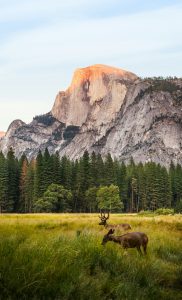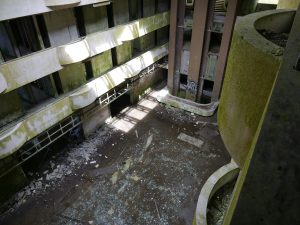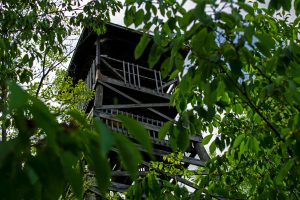
When it comes to the apocalypse, picking the right piece of real estate is no longer about granite countertops or proximity to the best school district—it’s about choosing a property that will keep you alive and comfortable when the world goes full “Mad Max.” If you’re serious about being the last person standing (or reclining in a bunker), here’s a guide to selecting your end-of-days real estate with some humor and a little practicality.
Location, Location, Location
Sure, the old adage still holds true, but now you’re looking for a place that’s far from zombie-infested city centers or alien motherships hovering over major highways. Here’s the apocalypse-approved real estate checklist:
- Rural but not TOO rural: You want to be out of the chaos, but not so remote that you’re on your own if a roving gang of marauders decides your bunker looks cozy.
- Natural resources: Fresh water, arable land, and a nearby forest for wood are more valuable than a Whole Foods these days.
- Elevation: Zombies can’t climb well, and rising sea levels will wipe out coastal areas. Aim for high ground but not Everest high—you’re not running a Sherpa side gig.
Apocalypse Hack: Look for land near a former national park. Not only will you have access to nature, but if things really go south, no one’s going to mind if you start hunting the local deer.

Infrastructure: Bunker > Basement
Gone are the days when a two-car garage and a finished basement were top selling points. What you need now is a fortified bunker, a well, and possibly a self-sustaining farm.
- Bunker benefits: A hidden, underground bunker will keep you safe from radiation, hordes, or just really nosy neighbors. Make sure it’s got ventilation and Wi-Fi, because even the apocalypse needs Netflix.
- Water source: A deep well or river-fed filtration system is a must. No one wants to risk a water run through the chaos. Bonus points if there’s a stream nearby that you can turn into a fish farm.
- Renewable energy: Solar panels, wind turbines, and good old-fashioned wood stoves will be key. You can’t rely on the grid—because there won’t be one.
Apocalypse Hack: If you’re buying a property with an existing structure, check for any hidden underground rooms or bomb shelters from the Cold War era. You never know what survival treasures you might find.

Community: Lone Wolf vs. Survivalist Tribe
Do you plan to go it alone or build a small community of survivors? This choice will affect your real estate decision.
- Solo dwellers: Look for land with natural barriers—cliffs, rivers, thick forests—to help keep unwanted guests away.
- Group survivalists: Choose a larger property with the potential for several outbuildings or cabins. Strength in numbers is real when mutant raccoons or rival survivors are on the prowl.
Apocalypse Hack: Try to establish a barter system with any neighboring compounds (if they’re friendly). It’s amazing what a trade of fresh veggies for clean ammo can do for morale.

Defense: Your Home is Your Fortress
While the open-concept floor plan was all the rage pre-apocalypse, post-apocalypse, you’re looking for a more defensive setup.
- Reinforced walls and fences: Stone or steel barriers around your property are key to keeping out the undead, animals, or other unfriendly visitors. Think medieval castle meets modern doomsday prepper.
- Escape routes: Every good apocalypse property needs a Plan B. Make sure there are at least two exits—whether that’s a tunnel system leading to a nearby forest or a hidden road out the back.
Apocalypse Hack: Watch any post-apocalyptic movie, and you’ll notice that rooftops are prime real estate for spotting danger. A flat-roofed house with a secure ladder system will give you a bird’s eye view of the chaos below.

Livelihood: Food and Resources
If grocery stores are a distant memory, your ability to cultivate food will be crucial.
- Farming: Look for fertile land where you can grow enough food to feed your household. Greenhouses will allow you to grow year-round, but a good old vegetable garden is a must.
- Livestock: Chickens for eggs, goats for milk, and maybe a couple of cows. Just remember, you’ll need space to shelter them from the elements (and predators).
- Foraging and hunting: The best real estate will offer nearby woods for hunting game and gathering wild edibles.
Apocalypse Hack: Learn to can, dry, or pickle your food. A well-stocked pantry of preserved goods will make you the talk of the post-apocalyptic town—or at least, it’ll keep you fed when winter hits.

Communication and Trade
In the early days of the apocalypse, ham radios and old-school CBs will be your link to the outside world.
- Radio tower or high points: If possible, try to secure land with a high vantage point where you can set up a radio tower or satellite dish. Communication is key, even if it’s just to swap conspiracy theories with fellow survivors.
- Proximity to trade routes: If bartering becomes a thing, it might help to be close enough to trading zones where you can swap goods. Being near a defensible pass or a crossroad could turn your property into a local hub for survivors.
Apocalypse Hack: Consider learning some low-tech skills like blacksmithing or carpentry. In a world without Amazon Prime, people will trade a lot for someone who can fix things by hand.

Buy Now, Panic Later
While most people are busy panic-buying toilet paper, you’ll be sipping your rainwater and tending your apocalypse-ready estate. In the end, real estate for the apocalypse is a lot like regular real estate—you’re investing in the future. Only this time, that future may involve defending your cabbage patch from marauding zombies. Happy house hunting!


 Facebook
Facebook
 X
X
 Pinterest
Pinterest
 Copy Link
Copy Link

